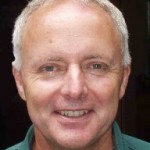Narara ecovillage raises funds without banks
Yesterday I had a coffee with Lyndall Parris, one of the Directors involved with the new Narara Ecovillage. Lyndall would be pleased to hear from anyone interested in finding out more about this residential development near Gosford, just north of Sydney.Her contact details are: lyndall@nararaecovillage.com and 0419 279 711. nararaecovillage.com…Here are some points I made from our conversation:-
- The Narara Ecovillage Co-op is set up to build a world class ecovillage community to integrate social, ecological and economic sustainability.
- The site is the former Gosford Horticultural Institute – the photos show it has a mix of hills, fields, woods, houses and is a rural haven.
- Their website is the best reference to learn more about the aims and aspirations.
- They’re using a co-operative structure instead of a company because it more fully reflects their values as shown on their website.
- Members are the investors, the shareholders, the designers, the developers, the future residents. And it is the members who decide how to use the profits resulting from the project.
- people join the co-op by making a commitment to buy a lot (at some point), buying $20,000 in shares, and agreeing to do some volunteer hours for the co-op.
- When titles are available after the DA is approved, their shares will count towards their lot price.
- Choice of lots is mostly determined by the priority in time of purchase.
- The development will be in three phases, with Stage One house building to start around mid 2014.
- People pay an additional $30,000 to reserve a lot in Stage One, now about three quarters full.
- Members who want to be in Stages 2 or 3 need not pay any additional now, but will still be fully part of shaping the community.
- Average lot prices are expected to be around $250,000.
- Currently there are about 40 ‘memberships’ translating to about 80 members (singles, couples and families). The eventual population is expected to be between 3-400.
- For those that are wondering if this might be something that they want to pursue, there are two formal documents explaining the project and how to join the co-op: a Disclosure Statement (like a prospectus) and the Co-op Rules.
The project is being funded by those buying shares and is therefore an example of a village being developed by self-funding means. It’s interesting that folks are prepared to buy into this project without knowing where their lot will be; that suggests to me that those buying are primarily buying ‘the dream’ and Lyndall agreed with me.
Let’s see if the project solves the urban heat island problem (which typically drive up subdivision temperatures by over 6 to 8 degrees), the typical up front costs for unsustainable road, water, sewage and energy infrastructure.
In my book, Sustainable House, there’s an example where I reduced developer charges from $27,500 to $7000 a lot in a Port Macquarie project in NSW by using sustainable road design and water, sewage and energy infrastructure. Although that’s a bush fire problem area the roads are only 5 m wide thereby increasing lot yield and amenity.
Folks will be able to live there for energy and water bills less than $300 a year no matter how many people live in the house, just as I do in my house, Sydney’s Sustainable House.
And it will be interesting to see if the project matches the VicUrban (now, Places Victoria) Meridian project where low cost road design creates self-irrigating drains for over 12,000 fruit trees planted in the drains; details are in my book, Sustainable Food.
With large developers such as Investa (see, for example: http://www.thefifthestate.com.au/archives/42612/) now publishing data on their journey to reduce energy and water use in their offices and shopping centres it would also be handy if all new projects seeking to be sustainable published data on costs, performance, living expenses, food sources and such.
Good luck to the Narara venturers,
M

